Current status / schedule Finished End date July 7, 2002 | Launch date 13 May 1963 | |
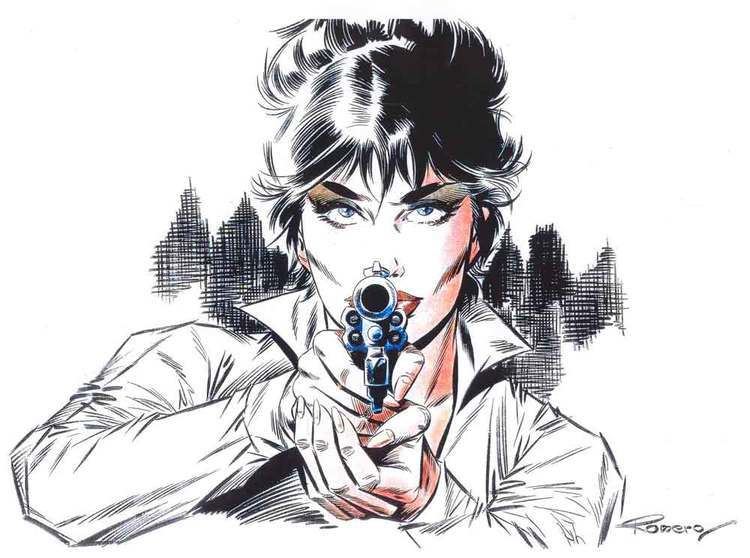 | ||
Similar Secret Agent X‑9, Axa, Rip Kirby, The Phantom, Mandrake the Magician | ||
Modesty blaise in the beginning peter o donnel
Modesty Blaise is a British comic strip featuring a fictional character of the same name, created by author Peter O'Donnell and illustrator Jim Holdaway in 1963. The strip follows Modesty Blaise, an exceptional young woman with many talents and a criminal past, and her trusty sidekick Willie Garvin. It was adapted into films in 1966, 1982, and 2003, and from 1965 onwards eleven novels and two short story collections were written.
Contents
- Modesty blaise in the beginning peter o donnel
- Sparks modesty plays modesty blaise
- The characters
- Comic strip
- Strip numbering
- Reprints
- Titan Books Old Series 1985 to 1990
- Titan Books New Series 2004 to date
- Story list
- Films
- Novels and short story collections
- Differences between comic strip and books
- Comics
- Audio
- Cars
- Music
- References
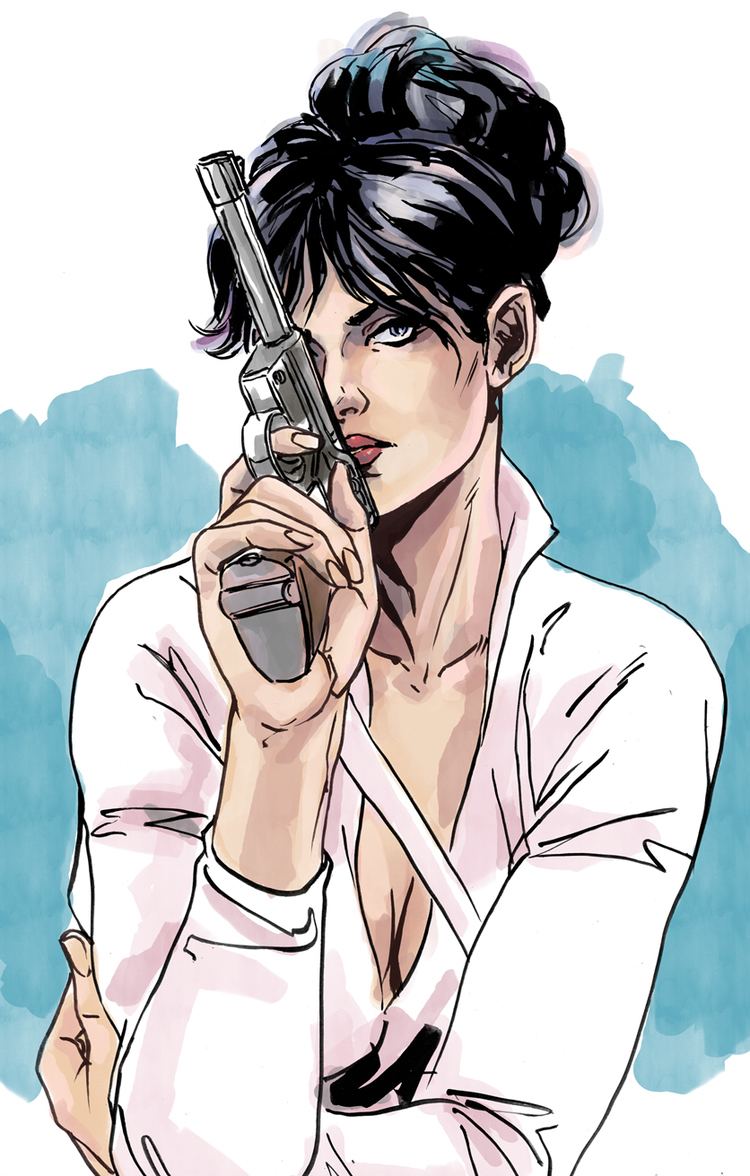
Sparks modesty plays modesty blaise
The characters
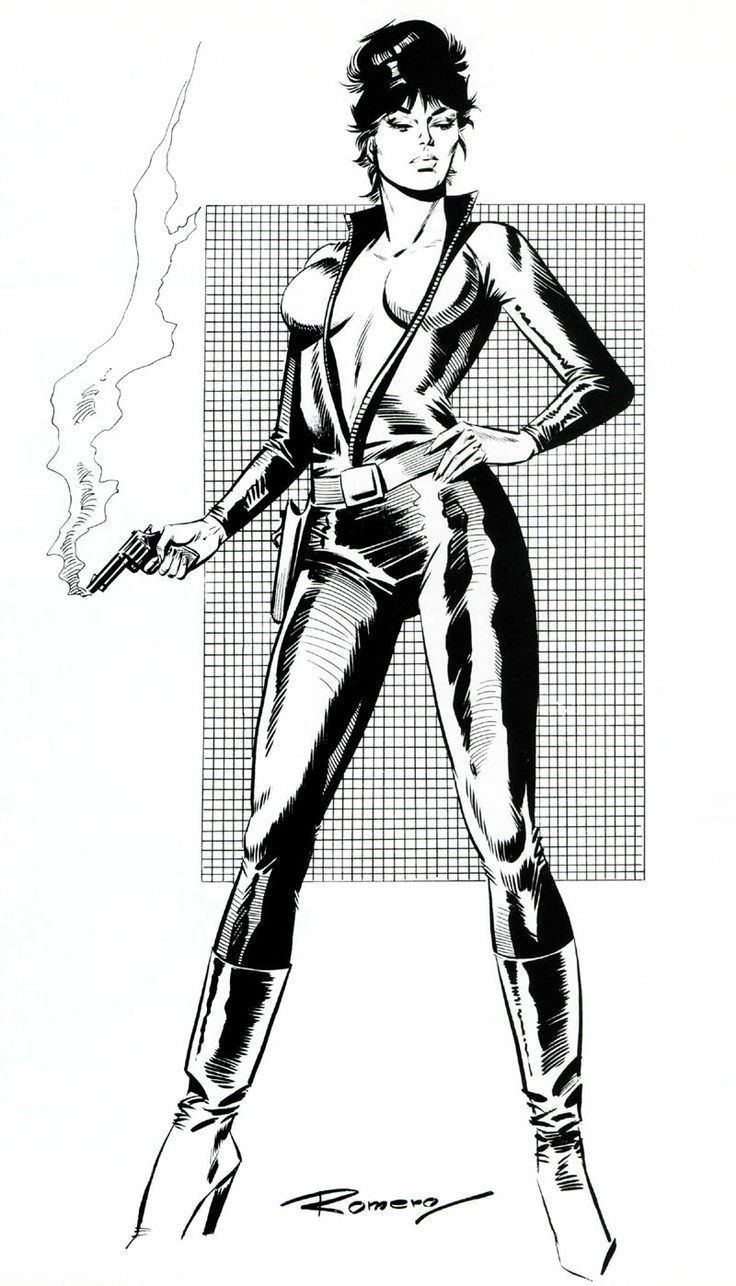
In 1945, a nameless girl escapes from a displaced person (DP) camp in Kalyros, Greece. She remembers nothing from her short past and wanders through post-World War II Mediterranean, the Middle East, and regions of North Africa, where she learns to survive the hard way. She befriends Lob, another wandering refugee who is a Jewish Hungarian scholar from Budapest. He gives her an education and a first name: Modesty. Sometime later Modesty creates her last name, Blaise, after Merlin's tutor from the Arthurian legends. When Lob dies is unclear, other than it being prior to her going to Tangier. In 'The Xanadu Tailisman' it is mentioned that Modesty has left Lob at a village to recover from a wound; she goes alone to sell a car tyre. In 1953 she takes control of a criminal gang in Tangier from Henri Louche and expands it into an international organization called the Network.
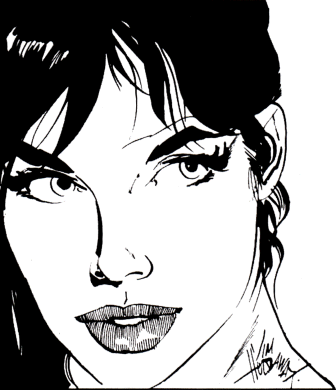
During the years that she runs the Network she meets Willie Garvin. Despite his desperate lifestyle, she sees his potential and offers him a job. Inspired by her belief in him, he pulls through as her right-hand man in the Network and becomes Modesty's most trusted friend. Theirs is a strictly platonic relationship, based on mutual respect and shared interests. He always calls her "Princess", a form of address only he is allowed to use. Other members of the Network call Modesty "Mam'selle" (as in the French term "Mademoiselle" or "Miss"). Though their relationship has no sexual element, it is Modesty's various lovers who feel jealous of Garvin, rather than the other way around – as he is the only man who remains part of her life, while lovers come and go. By the same token, some of Willie's girlfriends are initially jealous of Modesty, before in some cases – such as Lady Janet – coming to understand how the dynamic between them works.
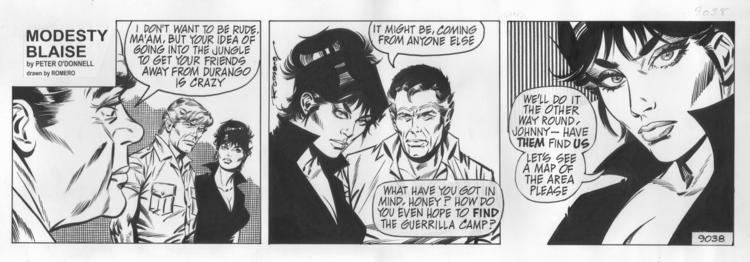
She obtains British nationality by marrying and divorcing an Englishman in Beirut; the husband (James Turner) dies a year later of alcoholism. Having made a point of not dealing in secrets belonging to H.M. Government, when she feels she has made enough money, she retires and moves to England and Willie Garvin follows suit. Bored by their new lives among the idle rich, they accept a request for assistance from Sir Gerald Tarrant, a high-ranking official of the British Secret Service. This is where the story really begins, although it is treated differently in the first comic strip and the first book. (See note in Differences between Comic Strip and Books, below.) Modesty's fortune is estimated at 500,000 pounds as of 1963. She lives in a penthouse in London overlooking Hyde Park, and also owns a villa in Tangier and a cottage two miles from Benildon, Wiltshire. She is 5 feet 6 inches (168 cm) tall and weighs 120 lbs (54 kg) as revealed in La Machine.
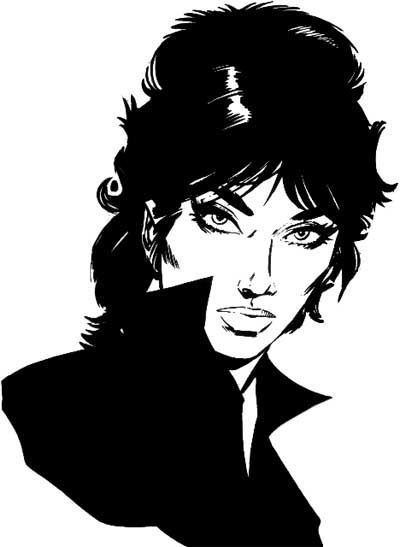
Many of her adventures are based on capers in which she and Willie Garvin become involved as a result of their association with Tarrant. However, they may also help perfect strangers or fight various eccentric villains in exotic locations of their own volition if the cause fits their values; "ghosts" from their Network past also emerge to haunt them from time to time. Although Modesty and Willie will not hesitate to kill if necessary, they avoid deadly force whenever possible, often relying upon their extraordinary physical combat and weapons skills. There are many occasions in the comic strip and novels where the two decide ahead of time whether to use deadly force ("for keeps") or less-lethal methods ("for sleeps") depending on the level of the perceived threat.
In Willie and Modesty's fights here is a great emphasis on unarmed combat and unusual weapons. Modesty's weapon of choice is a "kongo" or yawara stick and as for firearms she begins by preferring the Colt .32 revolver and Mab Brevete .32 ACP auto pistol, although in later books she switches to carrying a Star PD .45 auto pistol. Willie's preferred weapon is the throwing knife, of which he usually carries two. Many other strange weapons (such as the quarterstaff, épée, blowgun, and sling) and unexpected fighting techniques are also featured.
In keeping with the "floating timeline" spirit of other long-running comic strip and literary characters, Modesty and Willie generally do not age over the decades, with Modesty always being depicted as being in her late twenties and Willie eight years older. The only exceptions to this rule occur in the comic strip origin story, "In the Beginning" and in the 1996 short story collection Cobra Trap, the final Modesty Blaise book, which contains five stories that take place where Modesty's age moves from 20 to 52 (approximately), and the 2003 film My Name Is Modesty, which is a prequel depicting Modesty in her late teens. In an essay written for Myths for the Modern Age: Philip José Farmer's Wold Newton Universe (Win Scott Eckert, ed., MonkeyBrain Books, 2005), author Chuck Loridans contributes an article entitled "The Daughters of Greystoke" wherein he posits that Modesty is the daughter of Tarzan and La of Opar.
Comic strip
Having conceived the idea after a chance meeting with a girl during his wartime service in the Middle East, O'Donnell elected to work with Jim Holdaway, with whom he had worked on the strip Romeo Brown, after a trial period of collaboration with Frank Hampson, creator of Dan Dare, left O'Donnell dissatisfied. Modesty Blaise debuted in the London Evening Standard on 13 May 1963. The strip was syndicated among a large number of newspapers ranging from the Johannesburg Star to the Detroit Free Press, the Bombay Samachar, The Telegraph (Calcutta, India), The Star (Malaysia), The West Australian (Perth) and The Evening Citizen (Glasgow, Scotland).
After Jim Holdaway's death in 1970, the art of the strip was provided by the Spanish artist Enrique Badía Romero. Eight years later, Romero quit to make time for his own comics projects, and after short attempts by John Burns and Patrick Wright, Neville Colvin drew the strip until 1986. Then Romero returned to the job and continued until the end of the strip.
The strip's circulation in the United States was erratic, in part because of the occasional nude scenes, which were much less acceptable in the US than elsewhere, resulting in a censored version of the strip being circulated. (Modesty occasionally used a tactic that she called the "Nailer," in which she would appear topless, distracting the bad guys long enough to give Willie or herself a chance to incapacitate them.) An example of this censorship appears in the introduction to the 2007 Titan Books reprint volume Death Trap, which illustrated two segments of the story arc, "The Junk Men" that were censored by the Detroit Free Press when it published the strip in 1977; in both cases a screen was drawn over scantily-clad images of Willie and Modesty. Reportedly, O'Donnell did not approve of the changes, although they were made by the artist, Romero.
The final Modesty Blaise strip ran in the Evening Standard on 11 April 2001. Some of the newspapers that carried the series, feeling that it had become a tradition for their readers, began running it again from the beginning. O'Donnell, to give Romero some additional work, gave the artist permission to adapt one of his short stories ("The Dark Angels") as a graphic novel that was published in Scandinavia in 2002, later being reprinted in the US in a special issue of Comics Revue.
From 1 December 2008, the Evening Standard, which had stopped including comic strips for some time, republished La Machine, using the original artwork. Following a change of ownership of the paper, they did not continue with subsequent stories.
Strip numbering
The ordinary strips are consecutive numbered from 1 to 10183. Outside this numbering are the two newspaper stories "In the Beginning" and "The Killing Ground" and the two comic book stories "Modesty Blaise" and "The Dark Angels".
Outside the ordinary numbering is also an amount of A-strips. An A-strip has the same number as the previous strip but followed by an A. They were used on days when not all the newspapers running Modesty Blaise were published. An A-strip is not vital for the continuity of the story and is often just supplementing the previous strip.
The first A-strip was 194A and was published during Christmas 1963 in Scottish newspapers.
Since December 1974 The Evening Standard has not been published on Saturdays. So, since then, and the story "Cry Wolf", a sixth of the strips have been A-strips and have not had their premiere in The Evening Standard.
A single strip is numbered with an X suffix, e.g., strip number 3641X, and is similar to the A-strips.
Reprints
Many reprint editions of the comic strip have appeared over the years, of varying quality. Most reprint the earliest strips, with strips from the 1980s and 1990s being the least-often reprinted.
One of the earliest reprints in book form occurred in 1978 when Star Books—an imprint of WH Allen Limited—published two paperback-sized compilations of the Holdaway-era stories: 1) "In the Beginning", "The Black Pearl", and "The Vikings", and 2) "La Machine" and "The Long Lever". These reprints suffered from poor reproduction that rendered many panels illegible.
Between 1981 and 1986, Ken Pierce Books Inc. of the United States, in conjunction with Eclipse Comics, published eight volumes of comic book-sized reprints dubbed the First American Edition series. The first four books featured Holdaway-illustrated stories from the 1960s, while the last four featured strips from the early 1980s as illustrated by Neville Colvin. These books also suffered from reproduction problems that resulted in many panels being reprinted too light, making them difficult to read.
Manuscript Press published two volumes of late-1980s Romero strips in 2003 (Live Bait and Lady in the Dark); it also published all of the stories not reprinted elsewhere in serialised form in its magazine publications Comics Revue and Modesty Blaise Quarterly, the former of which, as noted above, also published The Dark Angels for the first (and, to date, only) time in English. Comics Revue is continuing to reprint Modesty Blaise strips as of 2015, although a planned reprint of The Dark Angels in autumn 2014 was cancelled just before publication when the copyright holders withdrew permission.
Titan Books Old Series 1985 to 1990
Between 1984 and 1990, Titan Books of England published eight volumes of reprints of strips featuring art by Holdaway and Romero, covering the period 1963 to 1974. All of the covers were drawn by John M. Burns.
Titan Books New Series 2004 to date
Beginning in March 2004, Titan launched a new series of reprint volumes. These new versions use larger images and reportedly come from better source material than the editions published between 1984 and 1990, and the series has gone far beyond the mandate of the original run. The reprints continue to be published at a rate of one or two per year, more than 10 years after their launch.
As well as an introduction to each story by Peter O'Donnell for books 1 to 16, by Lawrence Blackmore for books 17 to 24, by Simon Ward for book 25, by Rick Norwood for book 26, and by Rebecca Chance for book 28, most books include articles about the series. The individual story introductions are absent from book 27.
So far, the new Titan series has reprinted the full run of the Holdaway years, the full run of Romero's first tenure, the short spells of John Burns and Pat Wright, and the full run of Neville Colvin.
Story list
There were 99 storylines produced for the Modesty Blaise comic strip and all its printed forms, and for almost 40 years it was written by just one person: Peter O'Donnell. The strips and comic books were drawn by Jim Holdaway (JH), Enrique Badia Romero (ER), John M. Burns (JB), Patrick Wright (PW), Neville Colvin (NC), Dan Spiegle (DS) and Dick Giordano (DG).
Sources: A (Comics Revue Annual), C (Comics Revue), CM (Comic Media Vol 2, No. 2), CS (Comics Revue Special), F# (First American Edition Series, Ken Pierce), LB (Live Bait, Manuscript Press), LD (Lady in the Dark, Manuscript Press), MB (Comics Revue Presents Modesty Blaise), S# (Star Books paperback reprints, 1978), OT# (Titan Books, old series (1984–90)), T# (Titan Books, new series (2004–present)).
Films
After the initial popularity of the comic strip British Lion Films announced a Modesty Blaise film to be written by Sidney Gilliat that was never made.
A film entitled Modesty Blaise, loosely based on the comic strip, was filmed in 1966 as a comedy thriller. It was directed by Joseph Losey and starred Monica Vitti as Modesty, Terence Stamp as Willie Garvin, and Dirk Bogarde as Gabriel. Peter O'Donnell wrote the first draft of the screenplay for the film, but the script was heavily revised by others before shooting began, and the finished film bore very little resemblance to O'Donnell's vision in tone, theme, or characterisation. For example, a romance is established between Willie and Modesty, even though the comic strip firmly established only a platonic relationship between them. The film also incorporated several musical numbers. The film was unsuccessful.
In 1982, a one-hour pilot was made for a proposed Modesty Blaise television series, starring Ann Turkel as Modesty Blaise and Lewis Van Bergen as Willie Garvin. The film aired on the ABC Network to positive reviews, but no series resulted. This was a slightly more serious version of the stories than the campy 1966 comedy version. In this pilot the setting is moved from London to Hollywood, and both Willie and Tarrant are portrayed as Americans.
In 2003, a direct-to-video film titled My Name Is Modesty was released. The film was directed by Scott Spiegel and starred English actress Alexandra Staden as Modesty Blaise. Although promoted as the first of a series, no others were made. One immediately noticeable difference between the film and the source material is that it is a prequel to Modesty's established backstory as a crime boss; as such, the character of Willie Garvin is omitted.
Quentin Tarantino has been interested in directing a Modesty Blaise film for many years, and at one point Neil Gaiman wrote a script treatment based upon O'Donnell's novel, I, Lucifer. So far, nothing has come of these plans. Tarantino "sponsored" the release of My Name Is Modesty by allowing it to be released under the label "Quentin Tarantino presents ..." In the Tarantino film Pulp Fiction, Vincent Vega is seen reading a copy of Modesty Blaise. Nicole Kidman has also gone on record as being interested in making a Modesty Blaise film, and Jennifer Lopez was reported to be pitching for the part in 2003.
Novels and short story collections
O'Donnell was invited to write a novelization of the 1966 film. The novel, released a year before the film itself, and based on his original screenplay for the movie, fared considerably better than the film. During the following decades he would write a total of eleven Modesty Blaise novels and two collections of short stories. Several of the short stories either adapt comic strip stories, or would later be adapted into comic strip stories themselves. Characters cross over between the two media. Except for "Pieces of Modesty", the books were originally issued in hardback and have subsequently gone through numerous paperback editions.
O'Donnell's final book, Cobra Trap, is a short story collection. Intended by O'Donnell to be his literary finale, the final story depicts the deaths of Modesty and Willie (with an implied afterlife). O'Donnell, however, would continue to write the comic strip for several more years, and chose to end it on a more optimistic note, though the comic strip's finale does not contradict the prose version.
Beginning in the early 2000s (decade), Souvenir Press began a series of paperback reprints of the Modesty Blaise book series, using the first edition hardback covers, and originally concluding with a reprint of Cobra Trap in 2006. Souvenir subsequently gained the rights to the short story collection Pieces of Modesty and issued their reprint of that book in March 2010, with a new cover design based on the original hardback cover from the first Modesty novel, at which point all the Blaise books fell under the same UK publisher for the first time.
In 2008, Penguin Books of India reprinted the full series.
The 2012 Charles Stross book The Apocalypse Codex is, according to the author, a tribute to Modesty Blaise.
Differences between comic strip and books
Although the books generally reflect the characters previously established in the comic strip, there are a number of detail differences. One example of this is how Modesty is initially recruited to work for Sir Gerald Tarrant – although the strip story La Machine (1963) and the book story Modesty Blaise (1965) have similarities, and in both Tarrant achieves his aim by putting her under an obligation, in the strip story this relates to the validity of her marriage (and therefore her right to British nationality and residence) while in the book he provides her with information that enables her to rescue Willie Garvin and save his life. The name of her husband is given in the strip, with the marriage taking place in 1960 and him dying in 1961; in the novel he is unnamed and the marriage took place in 1962.
There are also cases where characters first appear in the books and then subsequently appear in the comic strip – Steve Collier first appears in I Lucifer (1967) and his future wife Dinah in A Taste for Death (1969) but they do not appear in the strip until Lady in the Dark (1989).
Comics
In Sweden the strip has been in continuous distribution since 1969 in a monthly comic adventure magazine called Agent X9 (after the existing Modesty comic magazine Agent Modesty Blaise, started in 1967, was merged with the X9 magazine). Many of O'Donnell's stories premiered here (translated into Swedish), and the magazine continues to run a Modesty Blaise story every month, from the archives. When the daily strip was discontinued, artist Romero was given permission by O'Donnell to do a final Modesty Blaise story directly for Agent X9 magazine. The two-parter was published in 2002 and based on an unused script by O'Donnell entitled The Dark Angels, which O'Donnell had previously adapted for the short story collection Cobra Trap. Romero has for the past years also contributed with original painted covers for the Agent X9 magazine.
In India Modesty has acquired a huge fan base and the stories have been published in various magazines starting in 1971. Modesty was featured in Kalki Magazine (1971), Kumudam Magazine (1972), Muthu Comics (1975), Lion Comics (1984 to date), Rani Comics (1990–2002) & Comic World (1998) in the Tamil language. They were also published in English in Spectrum Comics (1985–1986). Though other magazines stopped/ceased publishing Modesty Blaise, Lion Comics continues to publish her stories regularly. Considering the medium, certain images from the stories were edited to make them suitable for child readers.
The American magazine Comics Revue also continues to reprint the strip, and remains to date the only publisher to have released an English-language version of The Dark Angels.
In 1994, DC Comics released a graphic novel adaptation of Modesty Blaise (the novel), with art by Dan Spiegle and Dick Giordano (ISBN 1-56389-178-6).
Audio
Last Day in Limbo was adapted as a BBC World Service six-part radio Drama in 1978 with Barbara Kellerman as Modesty, James Bolam as Willie and Richard Vernon as Tarrant.
I Had a Date with Lady Janet (the short story from Pieces of Modesty) was published as an audio tape reading by Pickwick Talking Books in the early 1980s, featuring John Thaw as Willie (the story is a first-person tale told from Willie Garvin's point of view).
BBC Radio 4 has broadcast adaptations of three of the books in their 15 Minute Drama slot, each in five fifteen-minute episodes, adapted by Stef Penney and produced/directed by Kate McAll, starring Daphne Alexander as Modesty, with music by Will Gregory, arranged by Ian Gardiner.
A Taste for Death was originally broadcast from 17–21 December 2012, featuring Carl Prekopp as Willie and Alun Armstrong as Tarrant, with Sam Dale (Simon Delicata), Geoffrey Streatfeild (Steve Collier), Samantha Dakin (Dinah Pilgrim), Alex Fearns (McWhirter), Jeff Mash (Skeet Lowery) and Nigel Anthony (Sir Howard Presteign).
Modesty Blaise was originally broadcast from 16–20 June 2014, featuring Neil Maskell as Willie and Alun Armstrong as Tarrant, with Ewan Bailey (Gabriel), Alex Fearns (McWhirter), Matthew Gravelle, John Hollingworth and Hannah Pakeman.
The Silver Mistress was originally broadcast from 13-17 February 2017, featuring Paul Bazely as Willie and Ian McNeice as Tarrant, with Clare Grogan (Clare), Ewan Bailey (Sexton/Colonel Jim), Sara Markland (Lady Janet/Angel) and John Ramm (Quinn).
Cars
During the years the comic strip ran, the vehicles used by Modesty and Willie reflected current trends in the motor industry, usually featuring the more glamorous or exotic models then available. As with some of the supporting characters, the books sometimes – but not always – reflected the comic strips. Just as in the contemporary James Bond films, the cars featured were an integral part of the character image conveyed by the stories.
